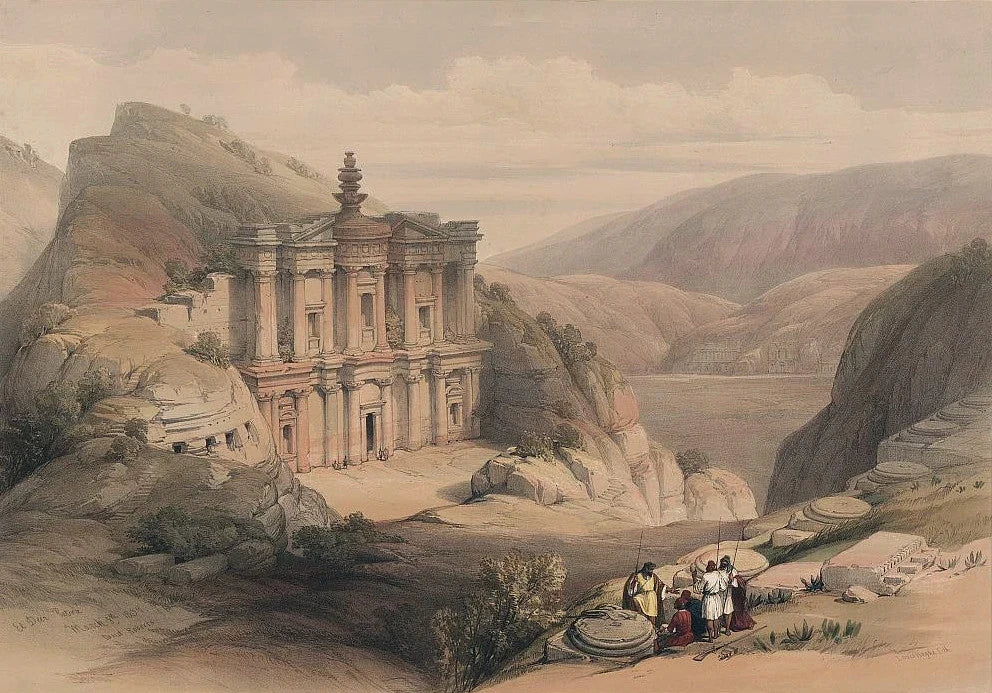

David Roberts RA
El Deir, Petra
Available in the Subscription and First Edition lithograph
Full plate: 90
Presented in a acid free mount
We only sell the original 19th century lithographs by David Roberts, please read the information on Roberts found on the homepage link listed artists.
The magnificent city of Petra was built by the Nabataean tribe over a period of five hundred years from around the sixth century BC onwards. In its heyday, under King Aretas IV (8 BC-AD 40), the city was home to around 30,000 people who had transformed themselves from desert traders - who dominated the incense and spice routes - into masterful architects, hydraulic engineers and craftsman, whose influence connected Arabia to the Mediterranean. By the seventh century, however, as a result of gradual changes to these trade routes, Petra had become a largely forgotten outpost and by the nineteenth century it was completely unknown to all but the local Bedouin. It was not until 1812 that Jean-Louis Burckhardt, a Swiss explorer who was travelling between Damascus and Cairo, accidentally stumbled across it. Although Leon de Laborde (1807-1869), a talented amateur draughtsman, had visited Petra in 1827 and had then included lithographic images of the city in his 1830 publication Voyage de l’arabie, it is David Roberts’s work - both created there and inspired by his time there - that have become iconic.
Roberts's party arrived in Petra on the 6th of March and remained there for just under a week. After initial concerns as to whether they would be granted safe passage to the ruins, they were not disappointed by what they saw. Roberts wrote of his astonishment and bewilderment 'with this extraordinary city’, while one of his travelling companions - John Kinnear - commented that ‘it was certainly one of the most wonderful scenes in the world. The eye wanders in amazement from the stupendous rampart of rocks which surrounds the valley to the porticoes and ornamented doorways sculptured on its surface. In the valley itself, the patches of green corn among the ruins, the stream bordered with oleander and willow, the sweet sound of the running water and the cry of the cuckoo and partridge were all delightful and refreshing after the silence and dreary solitude of the desert.’
It was not until the 8th of March that they visited El Deir and Roberts wrote in his journal: 'Today, accompanied by a guard of Arabs, we wound our way up a steep ravine; a broken staircase extending the whole ascent, which was nearly a mile. We at length reached the object of our journey, which was a building rarely visited, called El Deir. It is hewn out of the face of the rock, and is of greater magnitude than the Khasne, being upwards of 100 feet in height... El Deir stands a thousand feet above the level of the City... Though the ruins of the extraordinary place are immense, they sink into insignificance when compared with these stupendous rocks. I have often thrown my pencil away in despair of ever being able to convey any idea of this extraordinary place.'

